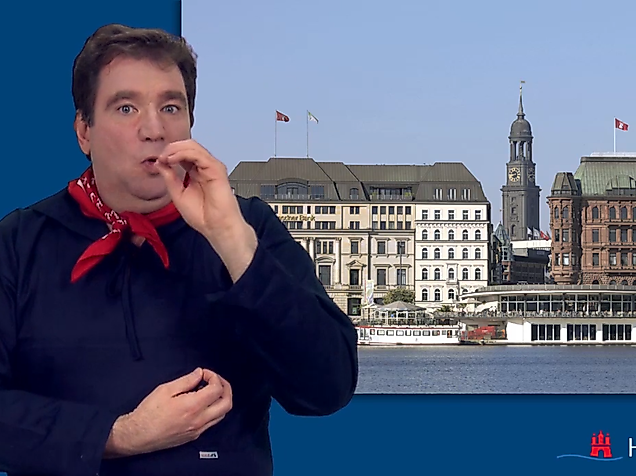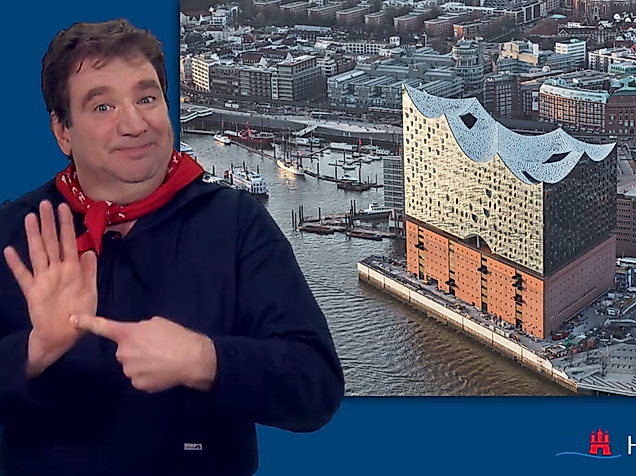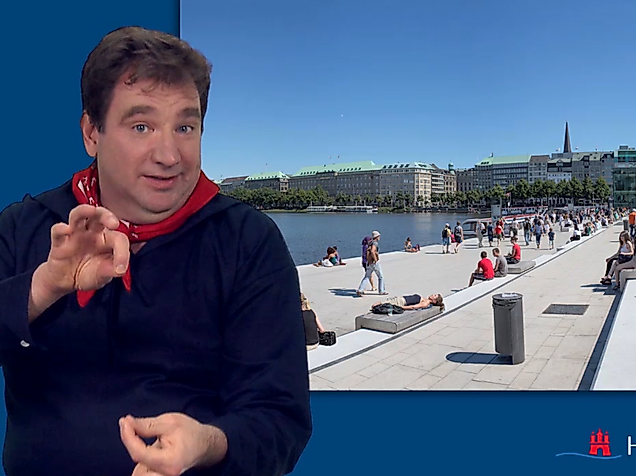
The Port of Hamburg in ISL
Hamburg is famous for its port – it is the second largest in Europe. Every year, 13,000 large and small ships arrive and depart from here, from boats and cruise liners to container ships. With these ships and their passengers, a wide range of goods and cultures come to Hamburg from across the world, but also go from Hamburg into the rest of the world.
Hamburg opened up as the “gateway to the world”, not just for those arriving, but also for those departing. Between 1850 and 1939 for example, a period of almost 100 years, five million people left from Hamburg to emigrate from Germany to America.
The jetties are located at the centre of the port. This swimming mooring point is 700 metres long. As a water “station”, the jetties are the starting point for harbour tours, the crossing from one side of the Elbe to the other, and excursions. There are also two museum ships on the jetties: a ship with a white sail and next to it, a large cargo ship.
One of the two museum ships is called Rickmer Rickmers. It is made of steel and is characterised by the fact that it can move in three different ways: by wind – recognisable by the sail –, by steam, and by diesel. Today, the ship is a museum, in which you can view different rooms and discover information about its history. You can view changing rooms and the captain’s quarters, or visit the restaurant on the ship.
The second ship – behind the Rickmer Rickmers – was built in 1961 and is called Cap San Diego. The ship used to be a cargo ship and can today be visited as a museum. It can also be rented for cultural events, lectures and similar events. Two to three times a year, the Cap San Diego also sets sail and goes on tours that you can take part in as a passenger.
Back to the port. Here, there is a distinctive square building with two cupolas at the jetties. It was built in 1911 and was a technical sensation at the time. The four lifts inside transport people and vehicles to a tunnel, which is 24 metres below and 426 metres long. This is the old Elbe Tunnel. After crossing through the tunnel to the other side of the Elbe, a lift takes you back up into daylight. From here, you can enjoy a panoramic view of Hamburg.
With the growth of the Port of Hamburg, there was increased construction on the southern bank of the Elbe. For this, it was necessary to get to the other side of the river. The tunnel offered a good alternative for this instead of a bridge. Today, the tunnel is mainly used for a different purpose, namely as a monument to those days in the past. It makes a beautiful and interesting part of Hamburg history visible.
You can reach the opposite bank of the Elbe at both sides of the port, either via the Elbe bridges or through the new Elbe Tunnel with its four tubes. You can also use the ferries directly at the port to get to the southern bank of the Elbe.
If you want to get a good view of the Port of Hamburg, you should go up the small hill above the jetties. This hill is actually a vineyard. Yes, indeed, the Hanseatic city of Hamburg has its own vineyard, whose landlord is the respective mayor of the city. Every year, approx. 50 bottles of wine are produced from the grapes. These are not for sale and are given as gifts to special visitors to the city, for example the Federal President.


